In emergencies, moving a patient the wrong way can make injuries worse. That’s why rescue teams rely on the scoop stretcher—a smartly designed tool that splits into two, allowing medics to lift a patient without rolling or dragging them. This simple yet effective design makes it ideal for spinal injury cases and tight rescue situations.
Let’s explore why the scoop stretcher is a must-have in emergency care. This guide will cover its purpose, features, and how it aids in safe patient handling.
Key Takeaways
- Scoop stretchers are specifically designed to minimize patient movement, making them essential for transporting individuals with possible spinal injuries in emergencies.
- The unique split design of scoop stretchers allows easy positioning under a patient without excessive movement, enhancing safety and preventing further injury during transfers.
- Proper lifting techniques and effective communication among responders are crucial for maintaining patient alignment and stability, significantly reducing the risk of secondary injuries during transport.
Understanding the Scoop Stretcher

Scoop stretchers are specifically designed to provide stability and support for patients with suspected spinal injuries, ensuring their condition does not worsen during transport. Unlike traditional stretchers, the scoop stretcher is constructed with the primary goal of minimizing patient movement, which is crucial when dealing with potential spinal trauma. This makes them an essential tool for paramedics and rescue teams who often face the challenge of transporting patients from difficult and confined spaces.
The lightweight yet durable construction of scoop stretchers facilitates quick deployment and maneuverability in various emergency situations. This feature is particularly beneficial in scenarios where every second counts and rapid patient stabilization is required. Rapid deployment of the stretcher significantly improves the chances of a successful rescue operation.
Furthermore, the scoop stretcher’s unique design allows it to be split into two parts, making it easier to position under the patient without the need for excessive movement. This feature is crucial for patients who must remain immobile to prevent further injury.
Key Features of Scoop Stretchers
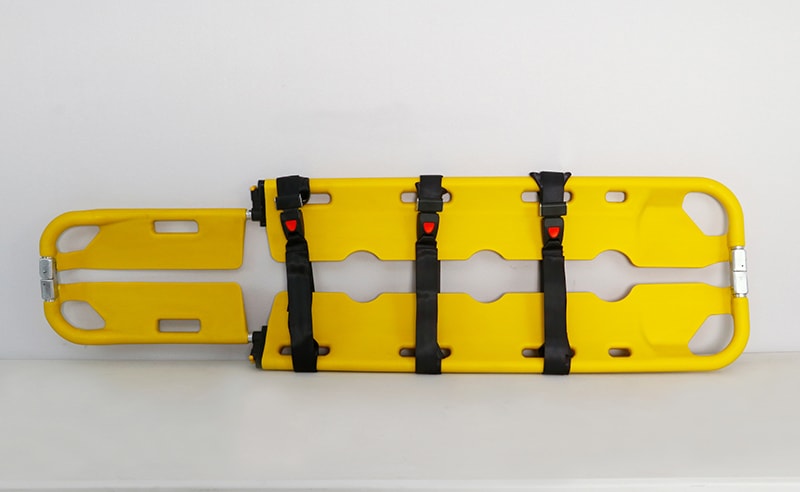
One of the standout features of scoop stretchers is their ability to be split vertically into two parts with shaped blades towards the center. This design allows for the two halves to be positioned separately alongside the patient, which can then be brought together to support the patient’s weight. This design reduces the need for rolling or lifting the patient, thereby minimizing the risk of exacerbating injuries.
Scoop stretchers are particularly effective in confined spaces where traditional lifting methods are impractical. Their user-friendly design allows emergency personnel to quickly learn how to use them effectively, ensuring that even in high-pressure situations, the stretcher can be deployed with ease. Ease of use is vital in emergency medicine, where time and efficiency are critical.
The blades towards the centre of the stretcher are designed to scoop up the patient gently, ensuring that they are lifted with minimal movement together until securing clips. This feature is particularly beneficial when dealing with patients who have suspected spinal injuries, as it helps to maintain their alignment and prevent further damage during transport.
Safe Patient Handling with Scoop Stretchers
Effective communication among responders during patient transfer is critical. Coordinated team efforts, particularly when positioning the scoop stretcher, to help maintain supine alignment during transfer and prevent any undesirable movement of injured areas. The technique of together underneath patient support—where each side of the patient is carefully managed—ensures that the injured areas during transfer remain undisturbed.
Studies published in the Journal of emergency medical literature have shown that when scoop stretchers for patient transport are used correctly, scoop stretchers reduce the risk of complications by a significant margin. In some cases, these devices can reduce secondary injuries by up to 30%, a statistic that reinforces their role in safe, effective emergency care. This reinforces the importance of following established protocols, such as those advocated by the Red Cross, to optimize patient outcomes.
Plastic Scoop Stretcher (Yellow)
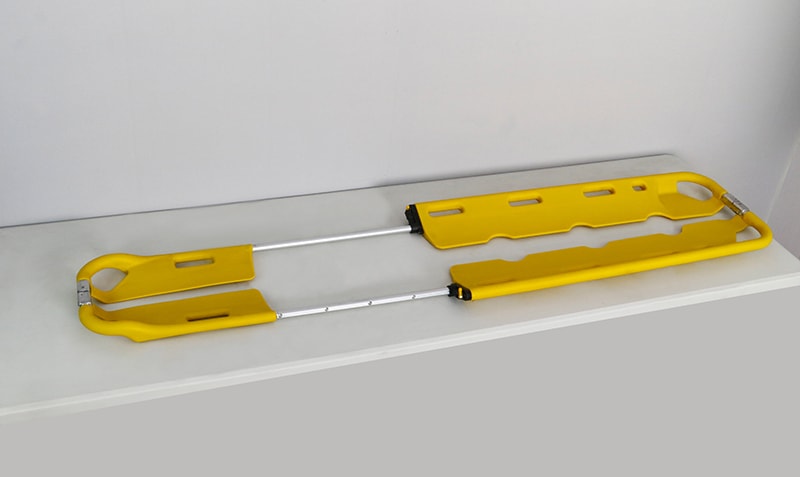
The plastic scoop stretcher (yellow) is a lightweight and cost-effective solution that excels in reducing the undesirable movement of injured areas during patient transfer. Its design, which is split vertically into two with parts with shaped blades towards the center, allows medics to easily slide the stretcher together underneath a patient. This ensures supine alignment during transfer, making it especially useful for managing possible spinal injuries without disturbing injured areas during transfer.
Aluminum Scoop Stretcher
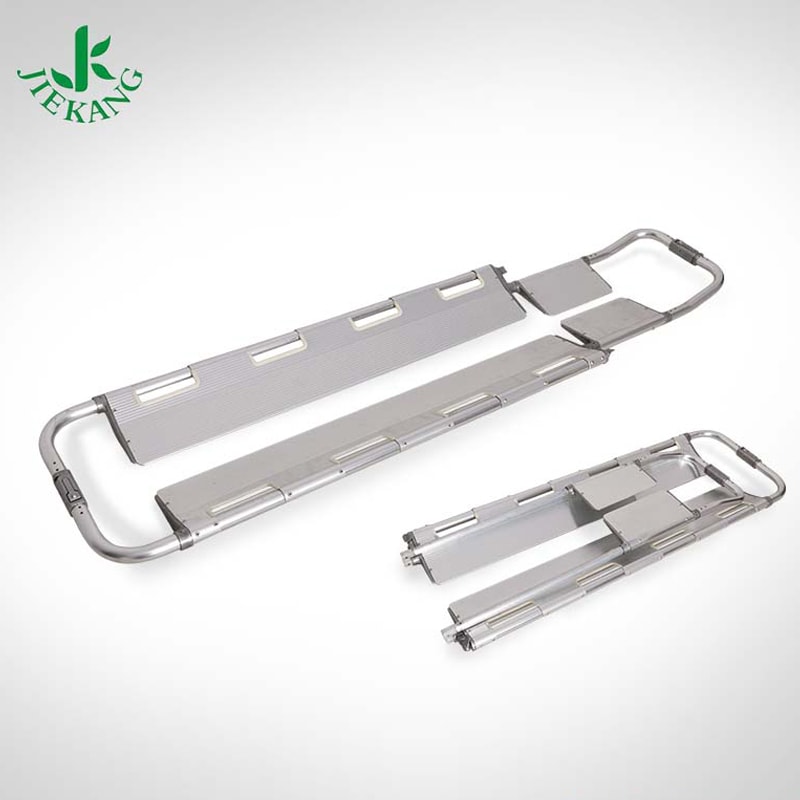
The aluminum scoop stretcher stands out for its durability and balanced strength-to-weight ratio, which is essential for efficient stretcher middle casualty lifting. Its structure features halves that are placed separately and come together until securing clips are applied, ensuring that the patient’s legs and overall posture remain stable. This robust design helps minimize further harm during transfers and is ideal for carrying casualties in situations involving spinal injuries. Guidelines from NFPA emphasize the importance of such reliable designs in emergency equipment.
Carbon Fiber Scoop Stretcher
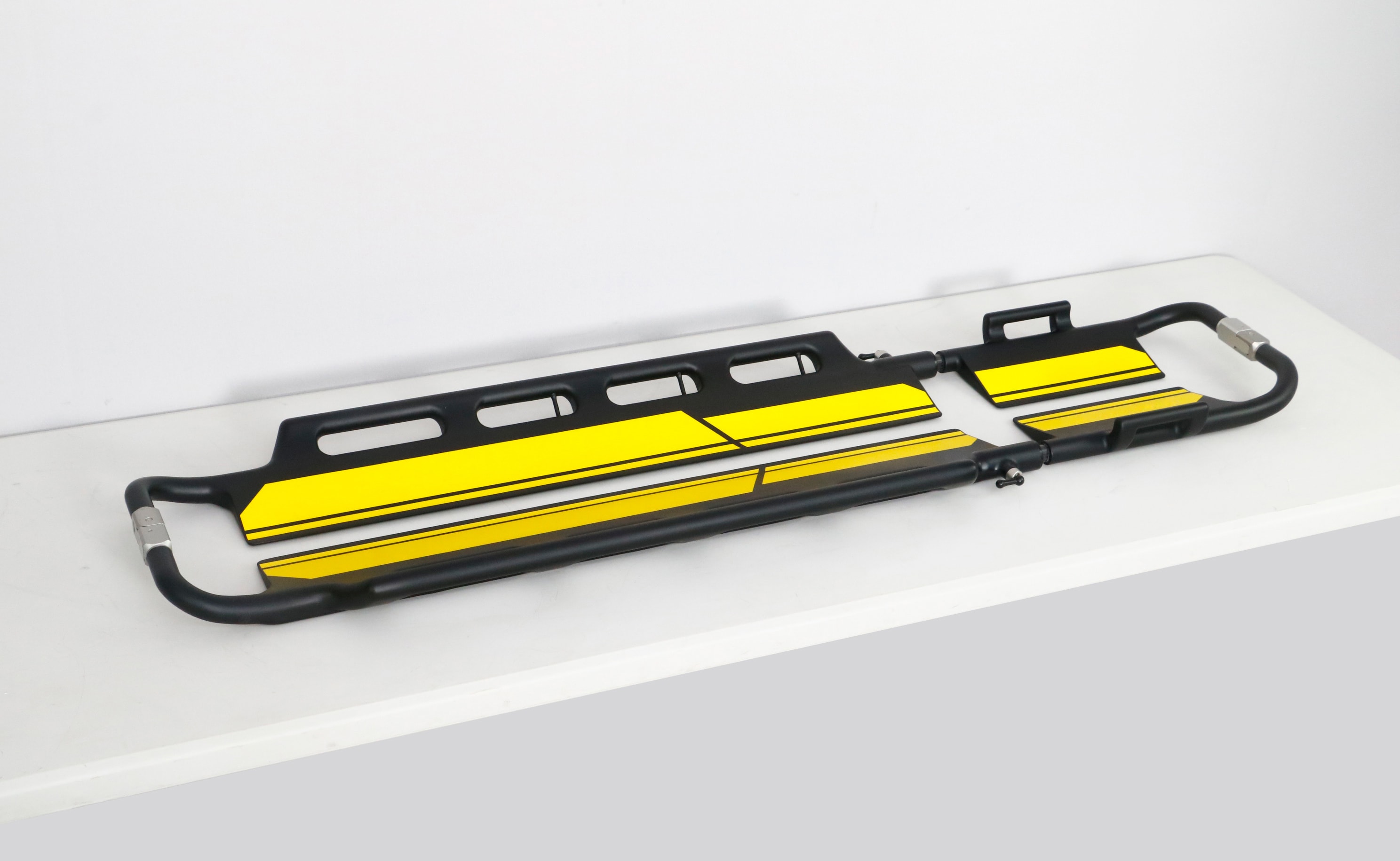
The carbon fiber scoop stretcher represents the cutting edge of emergency patient transport with its ultra-lightweight yet sturdy construction. It’s engineered to ensure supine alignment during transfer by minimizing the movement of injured areas during transfer, making it a top choice when handling injured people in critical scenarios. Its innovative design—split vertically into two and featuring parts with shaped blades—is perfect for maintaining stability and reducing the risk of further spinal injuries, even in advanced trauma situations.
Applications in Emergency Medical Services
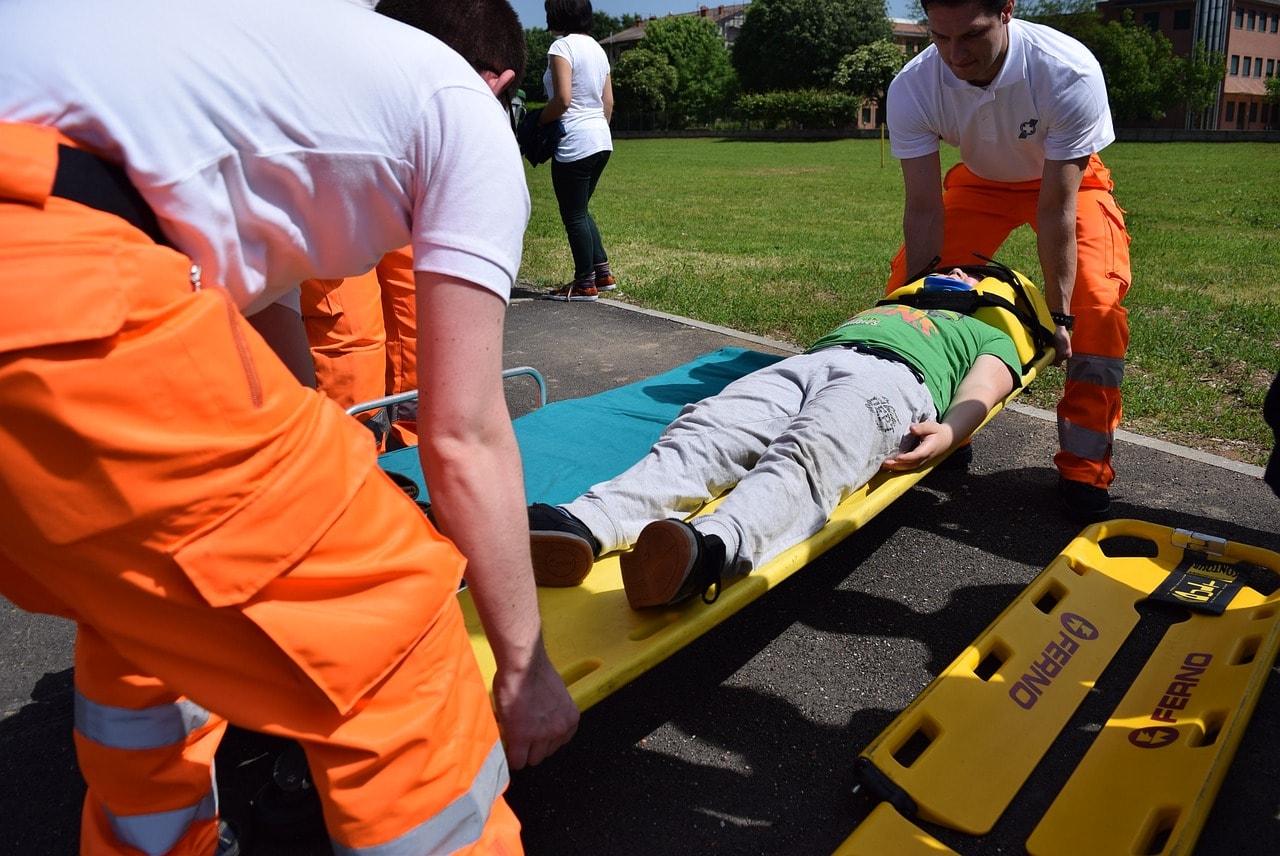
Scoop stretchers are essential tools in emergency medical services for managing trauma patients during transport. Their lightweight construction makes them easy to carry and deploy, crucial in emergencies. This feature allows for rapid response and efficient patient handling, which can significantly improve survival rates, making them ideal for carrying casualties with possible spinal injuries and ensuring the safety of the scoop stretcher middle casualty.
Pre-positioning scoop stretchers in areas prone to disasters can reduce emergency response times by as much as 50%, enhancing survival rates. Their design allows for minimal patient movement, crucial for preventing additional injuries during transport. This feature makes scoop stretchers invaluable in emergency medical services.
Certain scoop stretchers are designed to be compatible with X-ray imaging, allowing for scans without needing to move the patient. This enhances their utility in emergencies by allowing quick and accurate diagnosis while maintaining patient stability.
Comparison with Other Stretchers
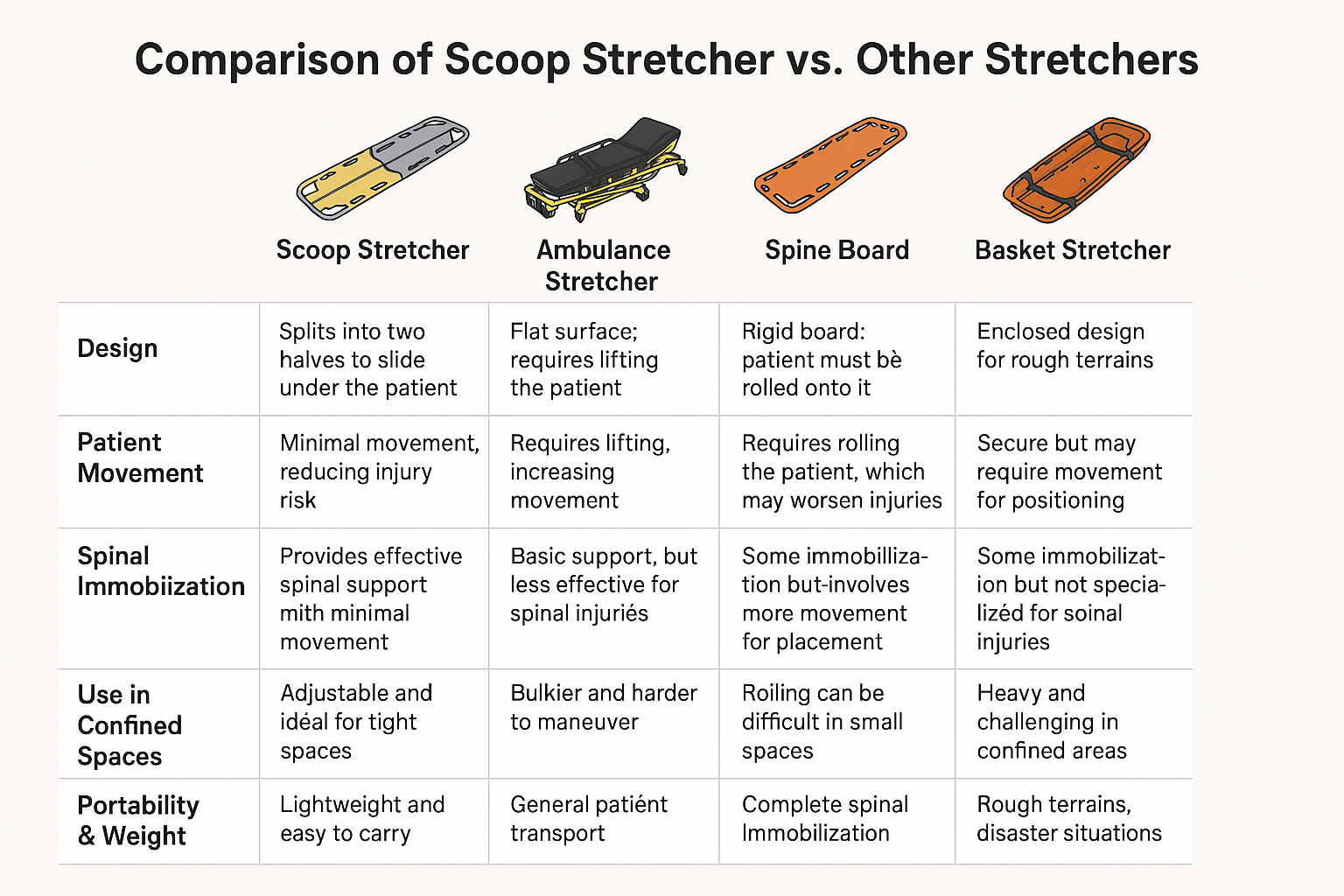
Backboards and traditional stretchers often require extensive repositioning—pushing the normal stretcher can sometimes lead to undesirable movement of injured areas. In contrast, the scoop stretcher’s innovative design, where two halves are brought together until the patient, offers greater flexibility. This makes it particularly effective for scoop stretcher middle casualty scenarios and stretchers for patient transport that prioritize minimal movement.
While backboards provide rigid support, they lack the versatility of the scoop stretcher, which is designed to manage casualties with possible spinal injuries more delicately. This versatility is why many emergency personnel prefer scoop stretchers reduce risks compared to traditional options like the Roberson orthopedic stretcher.
Case Studies and Real-World Examples
In the aftermath of the 2010 Haiti earthquake, the use of scoop stretchers significantly helped reduce the risk of worsening spinal injuries during rescues. This real-world example highlights the critical role of scoop stretchers in ensuring patient safety during transport in disaster situations.
During the 2011 Tōhoku earthquake in Japan, rescue teams utilized scoop stretchers to safely extract victims from collapsed structures, minimizing the risk of further injury. This case study demonstrates the adaptability and effectiveness of scoop stretchers in diverse emergency scenarios.
In Hurricane Katrina, scoop stretchers were employed to transport victims through flooded areas, demonstrating their adaptability in diverse emergencies. These real-world examples underscore the importance of scoop stretchers in ensuring the safe and efficient transport of injured people in various emergency contexts.
Maintenance and Care for Scoop Stretchers
Responders should check for defects and ensure the stretcher is adjusted for the patient’s size before use. Daily visual inspections are essential to detect any physical damages like cracks or deformations. Routine checks maintain the stretcher’s structural integrity and ensure safe use.
Monthly checks should focus on assessing structural integrity to ensure safety during operations. Routine cleaning and disinfecting maintain hygiene and prevent infections. Lubricating moving parts of the device reduces the risk of mechanical failures during use.
Annual maintenance should include a full functional test to ensure performance and reliability. Replacing worn-out parts promptly, such as straps and buckles, helps maintain the effectiveness of the scoop stretcher. Following manufacturer guidelines can enhance the longevity and performance of scoop stretchers.
Summary
Scoop stretchers are an indispensable tool in emergency medical services, providing unparalleled support and stability for patients with suspected spinal injuries. Their unique design allows for minimal patient movement during transport, significantly reducing the risk of exacerbating existing injuries. From their lightweight construction to their ease of use in confined spaces, scoop stretchers offer numerous benefits that make them a preferred choice in emergency scenarios.
The real-world applications and case studies discussed in this guide highlight the critical role of scoop stretchers in ensuring safe and efficient patient transport. Whether it’s in the aftermath of a natural disaster or during routine emergency medical services, scoop stretchers have proven to be a reliable and effective tool for rescuers
At JIEKANG, our certified scoop stretchers are engineered for fast, reliable patient transport, ensuring proper supine alignment during transfer and minimizing any undesirable movement of injured areas. Choose from plastic, aluminum, or carbon fiber options and customize your stretchers with your brand’s colors and logos. Trusted by over 1,500 clients in 45 countries, our products offer high durability, quick deployment, and bulk order consistency at competitive prices.
Ready to see the JIEKANG difference? Request a sample today and experience a rescue solution that’s built for critical moments. Contact us now to elevate your emergency response with our top-of-the-line scoop stretchers!
Frequently Asked Questions
What makes scoop stretchers for patient transport different from traditional stretchers?
The scoop stretcher differs by its ability to split vertically into two, enabling halves are placed separately under the patient. This minimizes undesirable movement of injured areas, which is especially important for casualties with possible spinal injuries.
How do scoop stretchers reduce risk during patient transport?
They work by supporting the patient in a patient in a supine position, ensuring that patient’s legs and feet remain stable. This design allows medics to secure the device together until securing clips are applied, thus reducing the chance of undesirable movement during the transfer of a trauma patient.
Are scoop stretchers for patient transport compatible with imaging techniques?
Yes, certain models are designed so that X-ray imaging can be performed without repositioning the patient, which is crucial for maintaining supine alignment during transfer and avoiding additional stress on injured areas during transfer.
What do the support student course manual and advanced trauma life support training advise regarding the use of these stretchers?
They emphasize the importance of positioning the scoop stretcher correctly, ensuring that the patient’s head and the patient’s legs are supported. The student course manual advises that proper training in trauma life support student protocols is critical for effective stretcher middle casualty lifting.
In what emergency scenarios are scoop stretchers for patient transport most beneficial?
They are most beneficial in situations involving possible spinal injuries and when handling injured people in confined spaces. The design, where two halves are merged until secured, makes them ideal for carrying casualties with minimal disruption to injured areas during transfer.
How should scoop stretchers be maintained to ensure optimal performance and patient safety? Regular maintenance of scoop stretchers is essential to guarantee their reliability during patient transport. It’s crucial to inspect the stretcher before and after each use, checking for any signs of wear, damage, or malfunction. If any issues are detected, the stretcher should be taken out of service until repaired.



